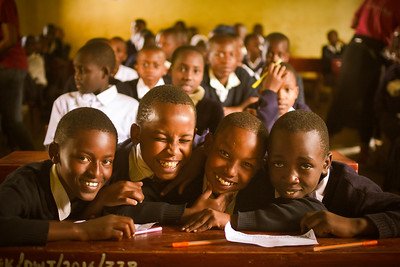Can mentoring Improve girls’ agency and education? A proposed mixed methods experimental evaluation of the Binti Shupavu Project in Tanzania
Prepared by; Devotha Festo, Eugenia Kafanabo, Brenda Oulo, Aubryn Sidle, Monica Swai
The COVID-19 pandemic has highlighted the extreme precarity of girls’ retention and achievement in secondary school in East Africa. In Tanzania, girls’ secondary school outcomes, and especially their transition to tertiary education, continue to lag substantially behind that of boys. Forty-four percent of Tanzanian girls become mothers or pregnant by the age of 19, thus stalling their educational prospects in lower secondary (Davids & Maliti 2015). These trends are exacerbated by gender inequalities in the household and girls’ unique experiences of the COVID-19 pandemic which included heightened instances of sexual assault, exploitation, and economic precarity (Oulo et al. 2020). The large proportion of girls giving birth and/or marrying in their teen-age years underscores the need for cost-effective interventions that will support girls’ agency and continued learning in formal educational settings.
School-based girls’ clubs have been identified as a promising practice for supporting vulnerable girls’ retention and achievement in school. Marcus et al. (2017) conducted a systematic review of 44 girls/youth club programs located largely in sub-Saharan Africa and South Asia and showed that the vast majority of programs positively impacted girls’ social-emotional competencies (such as self-confidence, decision-making, etc.), and 25% of programs also showed an increase in school enrollment, attainment and a reduction in dropout (p. vi). Although a wide range of SEL outcomes have been identified as the result of girls’ clubs programming, the causal link between these skills and education outcomes has yet to be established.
With pandemic-related losses in education looming large, the need for evidence that documents the causal mechanism of girls’ clubs programs and their effect on girls’ education outcomes, has never been more urgent. Specifically, our paper will detail the intervention and protocol for a planned study evaluating the Binti Shupavu girls’ club program in Tanzania to be conducted by a collaborative South-South partnership between the Girls Livelihood and Mentorship Initiative (GLAMI), the AMPLIFY Girls Network in East Africa and the University of Dar es Salaam. The proposed study investigates agency as a causal mechanism and outcome of interest for improving girls’ education. We hypothesize that girls’ club programs that have an effect on education outcomes do so because they improve girls’ agency.
Binti Shupavu is an afterschool girls’ club program currently operating in government O-level schools in Arusha and Kilimanjaro, Tanzania. Operated by Tanzanian NGO GLAMI, Binti is a training and mentoring program for adolescent girls tailored to specifically address key challenges that lead to tens of thousands of Tanzanian girls dropping out of secondary school every year. This comprehensive program lasting four years builds confidence, resilience, and the determination to succeed through a mix of seminars and small group tutorials delivered weekly by university-educated Tanzanian women. Although this is a multi-component program, the centerpiece of Binti Shupavu and GLAMI’s theory of change, rests on the importance of mentorship to girls’ success.
The proposed study is a cluster (school-level) randomized controlled trial design, utilizing longitudinal mixed methods to address two primary research questions and study aims:
1. What is the relationship between agency and education?
a. Aim 1: To causally identify the relationship between girls’ agency and two types of education outcomes for girls in lower secondary school: retention and achievement.
2. And how do girls’ club programs contribute to these outcomes?
a. Aim 2: To qualitatively identify the ‘causal path’ of program effect on girls’ agency.
We hypothesize that the Binti Shupavu program will improve girls’ agency as measured by a pre-validated tool (Sidle et al) and that this success is directly related to exposure and engagement of girls to peer mentors in the program. Further, that increasing girls’ agency has a direct, positive effect on girls’ education outcomes—especially retention.
Twenty participating schools will be recruited into the study with a total of 1,648 participants across both study arms. Schools will be drawn from Morogoro District where there has been no prior participation in the programs offered by GLAMI and will be randomly assigned to either an intervention or control arm. The primary research aim will be evaluated using individual-level descriptive and inferential statistics that account for the clustered design. The secondary aim will be accomplished via a qualitative process tracing study, a longitudinal method for identifying causal mechanisms and causal path through quantitative and qualitative data collected from a subgroup of program participants, at inflection points in the hypothesized causal chain. (Beach & Pedersen 2013).
Our mixed methods study design, is both unique and important for current questions about practice. Randomized control trials are powerful for estimating the effect size of given intervention and indicating whether or not a program ‘works.’ However, it is not simply enough to understand if an intervention works, we also need to understand how and why programs are successful in order to predict how they must be adapted to different settings. This study proposes to causally investigate the link between girls’ agency and education attainment in Tanzania while simultaneously identifying the causal path for how girls’ clubs operate to improve outcomes.

